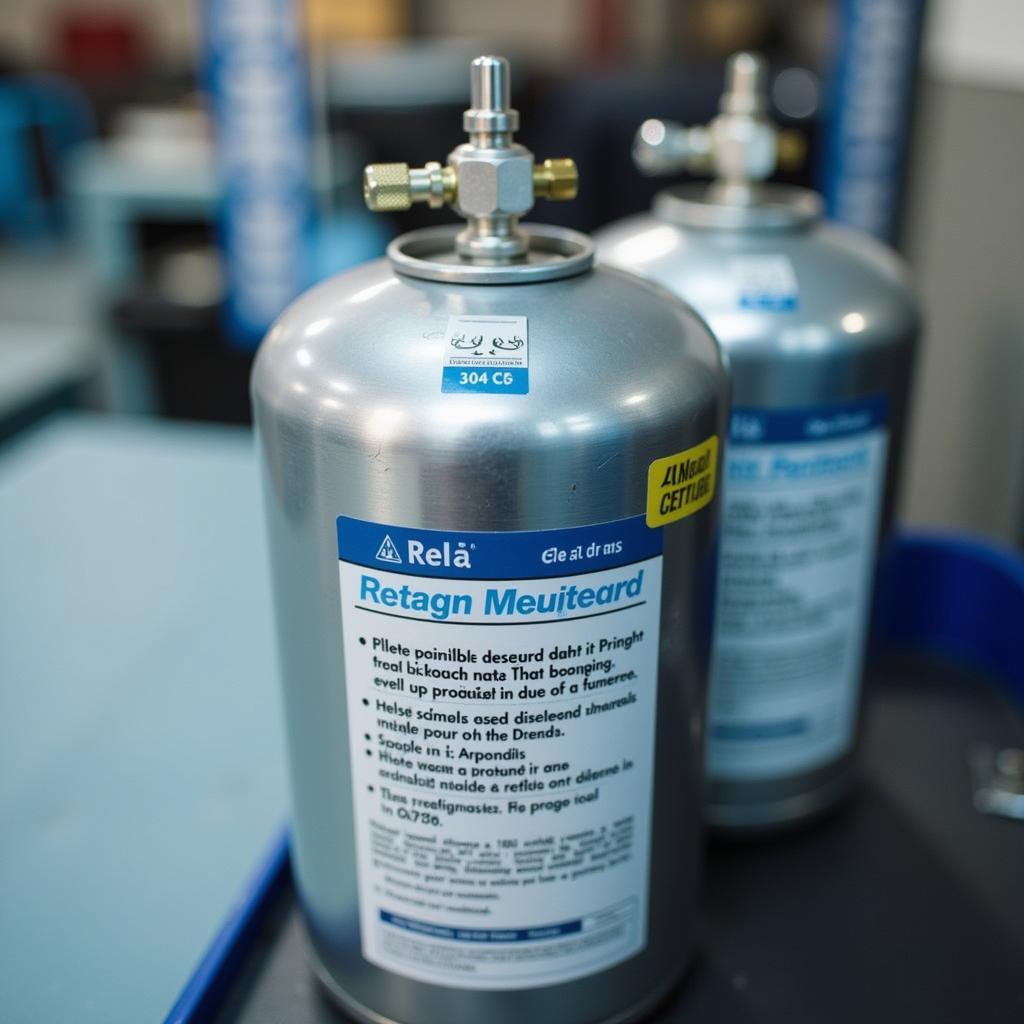R134a refrigerant is typically colorless. Understanding its properties, uses, and safety considerations is crucial for anyone working with refrigeration systems. This article delves into the color, characteristics, and important details surrounding R134a refrigerant.
Decoding R134a: Properties and Appearance
R134a, also known as 1,1,1,2-Tetrafluoroethane, is a hydrofluorocarbon (HFC) refrigerant commonly used in a variety of applications, from automotive air conditioning to residential refrigerators. In its pure form, R134a is a colorless gas, often compressed into a liquid for storage and use. While it’s generally colorless, some commercial formulations might contain trace amounts of additives which could impart a slight tint, but these are usually imperceptible and don’t affect its performance. It has a slightly sweet odor and is non-flammable at room temperature. It’s important to note that the colorlessness of R134a doesn’t indicate its safety. Proper handling procedures are crucial.
 R134a Refrigerant Canister
R134a Refrigerant Canister
Why is Knowing the Color of R134a Important?
While the color itself doesn’t offer much practical information about the refrigerant’s properties, knowing that pure R134a should be colorless can help identify potential contamination. If you encounter R134a with a distinct color, it could signify the presence of impurities, oil, or other substances that could compromise the system’s performance or even indicate a more serious problem. This is particularly relevant for technicians troubleshooting refrigeration issues.
R134a vs. Other Refrigerants: A Color Comparison
Other refrigerants can have different colors, primarily due to added dyes for identification purposes. For example, some older refrigerants were slightly tinted to aid in leak detection. Knowing that R134a is typically colorless differentiates it from these other refrigerants and helps prevent accidental mixing, which can be dangerous and damage equipment.
Safe Handling and Disposal of R134a Refrigerant
Regardless of its color, R134a requires careful handling. It should only be used in well-ventilated areas, and appropriate safety equipment like gloves and goggles should be worn. Direct contact with skin can cause frostbite, and inhaling high concentrations can be harmful. R134a is also a greenhouse gas, so proper recovery and recycling are essential to minimize environmental impact. Never intentionally release R134a into the atmosphere.
What Does Colored R134a Mean?
If your R134a isn’t colorless, it’s a sign something is amiss. This could be due to:
- Contamination: The presence of impurities or debris can discolor the refrigerant.
- Oil Mixing: Oil circulating within the system might mix with the refrigerant, altering its appearance.
- Chemical Reaction: In some cases, a chemical reaction within the system could lead to discoloration.
“Always prioritize safety when working with refrigerants. If you notice any unusual color or odor, consult a qualified technician immediately,” advises Dr. Emily Carter, a chemical engineer specializing in refrigerant technologies.
Conclusion: Colorless, But Crucial
Understanding that R134a refrigerant is typically colorless is a valuable piece of information for anyone working with refrigeration systems. While the color itself doesn’t directly indicate its performance, deviations from its usual colorless appearance can be a warning sign of potential problems. Remember that safe handling and responsible disposal are crucial, regardless of the refrigerant’s color. By adhering to proper procedures and staying informed about R134a’s characteristics, we can ensure safe and efficient operation of our refrigeration systems.
FAQ
- Is R134a flammable? No, R134a is non-flammable at room temperature.
- What is the smell of R134a? It has a slightly sweet odor.
- Can I mix R134a with other refrigerants? No, mixing refrigerants is dangerous and can damage equipment.
- What should I do if I suspect an R134a leak? Evacuate the area and contact a qualified technician.
- How should I dispose of R134a? R134a must be recovered and recycled by a certified professional.
- Is R134a harmful to the environment? Yes, R134a is a greenhouse gas and contributes to climate change.
- What are the common uses of R134a? It’s used in automotive air conditioning, residential refrigerators, and various other cooling applications.
For any assistance, please contact us at Phone Number: 0373298888, Email: [email protected], or visit our address: 86 Cau Giay, Hanoi. Our customer service team is available 24/7.
